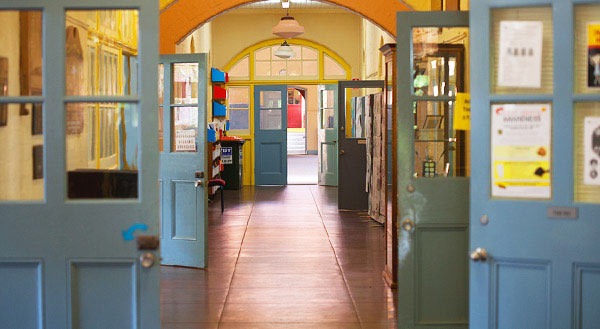
Take the bullying incident seriously and know that your child’s school will too.
Stay calm and positive
It can be upsetting when your child is being bullied. Focus on identifying a solution with your child. A confident, positive and resilient appearance can stop bullying from continuing. It might be helpful to draw on your own networks to get support for yourself while you are helping your child.
Talk with the school
You do not need to ask your child’s permission to talk to the school. Understandably, children who are being bullied are often fearful and worry that any action will worsen the problem. The solution is to make a parental decision to talk to the school.
A consistent and co-operative approach by both the home and school is important. You can always let your child know later what actions you have taken. Let the school take responsibility for helping students who are bullying to change their ways.
Keep your child safe
You should contact the school immediately if your child's safety is at risk.
Talk with your child
Encourage your child to talk about what happened. If they want to try to deal with the bullying themselves, discuss these strategies and set a short period of time to see if they can resolve the situation. Tell your child that reporting the bullying is okay. Assure your child that it is not their fault.
Encourage your child to:
- try to act unimpressed or unaffected
- use other strategies to diffuse the situation (e.g. agreeing in an offhand way with the bullying when they say offensive or negative things - this is known as fogging)
- say 'No!' firmly
- talk to the teacher or another staff member, e.g. school guidance officer
- act confidently even when they don't feel it.
Practise some strategies at home with your child to help them to:
- stand and walk in a way that appears more confident
- give a quick reply to surprise or disarm the other child
- use a routine response (e.g. okay, whatever) that implies that the child is not bothered.
Talk about what we know doesn't work with bullying:
- fighting back
- bullying the bully
- ignoring it
- playing with a different group of friends
- remaining silent about the problem.
Talk to your child about the tips and advice offered on the student section of this website.
Give them the Kids Helpline telephone number 1800 55 1800 to use if they ask to talk to someone other than the school, or you don't feel able to support them.
Say no to fighting
Do not advise your child to fight with the other child. Fighting (as distinct from defending themselves from a physical attack) with the other child can escalate the situation and your child may be reprimanded for their part in a fight.
Seek help for your child
Seek help for your child to recover from and understand the bullying incidents and give them the chance to improve their social skills. A child who has been bullied can be at greater risk than others of being bullied again (even when the bullying has been dealt with). Knowing how to deal with bullying and difficult people not just at school but throughout life in social situations and at work is a basic life survival skill.
My child is being racially bullied
Our schools are committed to ensuring students from all backgrounds feel safe and connected at school and are able to achieve their best.
Racist bullying
Racist bullying occurs when someone is put-down, teased, intimidated or shamed because of their:
- physical appearance
- ethnic background
- religious or cultural practices
- the way they talk or dress.
Racist bullying can be anything from casual but hurtful remarks, to deliberate physical and verbal attacks.
Unfortunately, racist bullying continues to occur in our school communities.
A 2014 Australian study found that:
- Over a third of students reported direct experiences of racism at school at least once a month
- Over a fifth of students experienced at least one form of direct racism every day. The most common experience was being told they ‘didn’t belong in Australia’ by another student
- Over 65 percent of students reported seeing another student being called names or being teased because of their cultural background.
Impacts
Racist bullying can impact the:
- student experiencing racist bullying and their sense of belonging to the school community
- students witnessing this form of bullying
- parents and families of children who are experiencing racist bullying
- wider school community and school culture.
At an individual level, racist bullying can have long-term negative effects on:
- students’ physical and mental health
- school attendance
- educational attainment.
Preventing racist bullying
For all students to feel connected, protected and respected, schools need to:
- build a culture that is inclusive
- value diversity
- not tolerate racist bullying.
There are a range of things a school can do prevent bullying. These include:
- having a bullying prevention policy
- staff, students and parents working together
- looking at school policies to make sure they are clear and well understood
- building a classroom environment that is welcoming
- building up the skills of all school staff
- using a range of different programs and strategies to address and prevent bullying.
For more information, see these fact sheets:
There is more information and resources about bullying on Bully Stoppers.
For more information about how upstanders can help prevent bullying, see I have your back.
If you want more information about what to do if your child is experiencing bullying, this page may be helpful: Bullying. No Way! – How parents and carers can respond.
More information
For more information, see: